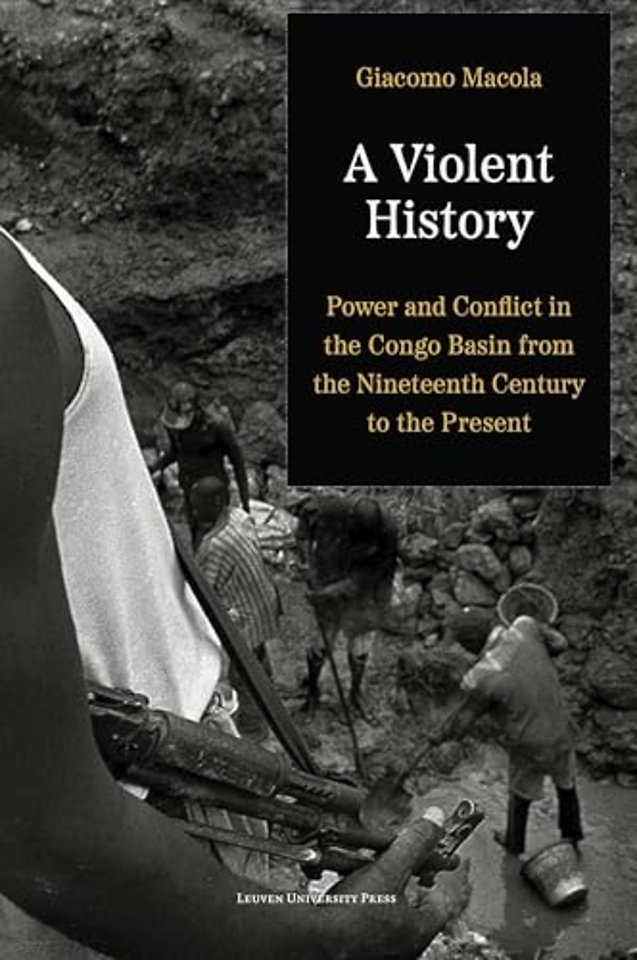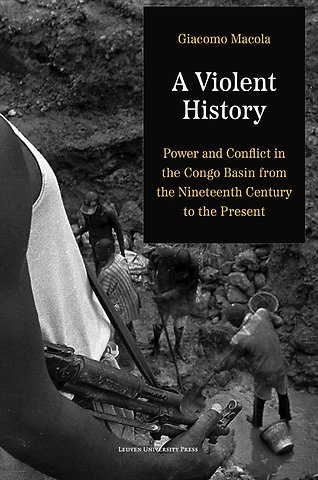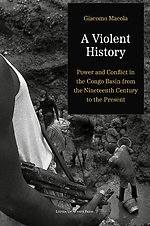Giacomo Macola
Leuven University Press
1e druk, 2025
9789462704510
A Violent History
Power and Conflict in the Congo Basin from the Nineteenth Century to the Present
Specificaties
Paperback, 272 blz.
|
EN
Leuven University Press |
1e druk, 2025
ISBN13: 9789462704510
Rubricering
Verwachte levertijd ongeveer 3 werkdagen
Specificaties
ISBN13:9789462704510
Taal:EN
Bindwijze:paperback
Aantal pagina's:272
Uitgever:Leuven University Press
Druk:1
Verschijningsdatum:13-8-2025
Hoofdrubriek:Geschiedenis
Inhoudsopgave
Maps
Abbreviations
Preface to the English Edition
Acknowledgements
Introduction
Chapter 1. The “Ancien Régime”
1.1 The “equatorial tradition”
1.2 The Luba kingdom
1.3 The Lunda “commonwealth”
Chapter 2. Traders, Raiders and Warlords in the Nineteenth Century
2.1 Long-distance trade networks
2.2 Msiri’s warlord state
2.3 Tippu Tip and the Arab-Swahili of eastern Congo
Chapter 3. The État Indépendant du Congo and the Occupation of the Congo Basin
3.1 The “système domanial”
3.2 The Force Publique
3.3 Van Kerckhoven, the Congo–Arab War and Ngongo Luteta
3.4 Mukanda Bantu and Clément Brasseur
Chapter 4. “Red Rubber”
4.1 The rubber companies
4.2 “Collaborators”: from the waungwana to Lupaka
4.3 A genocide in Congo?
4.4 The Congo reform movement
Chapter 5. The Belgian Congo
5.1 Administrative structures
5.2 The mining sector
5.3 Forced crops and forced labour
5.4 The Pende revolt and the “weapons of the weak”
5.5 The “creation of tribalism”
5.6 Belgian paternalism
Chapter 6. Decolonisation and Secession
6.1 A “precipitous decolonisation”
6.2 The secession of Katanga between neo-colonialism and the Cold War
6.3 The Katangese ideology
6.4 The return of warlordism
Chapter 7. The Rebellions of 1963–1965
7.1 From Pierre Mulele to the Simba
7.2 Internal weaknesses
7.3 Western intervention
Chapter 8. Mobutu’s Kleptocracy
8.1 “Mobutism”, “neo-patrimonialism” and “clientelism”
8.2 E economic and military crisis
8.3 Mobutu and the Cold War
8.4 The failure of the democratic transition
8.5 The collapse of the state and the new warlords
Chapter 9. The Congo and the “Great African War”
9.1 The repercussions of the Rwandan genocide and the “First Congo War”
9.2 Mzee Kabila’s Congo
9.3 The “Second Congo War”
9.4 The war economy
9.5 Military fragmentation and Mayi-Mayi
Epilogue. An Uneasy Present
Notes
Bibliography
Archives
Published primary sources
Secondary sources
Index
Abbreviations
Preface to the English Edition
Acknowledgements
Introduction
Chapter 1. The “Ancien Régime”
1.1 The “equatorial tradition”
1.2 The Luba kingdom
1.3 The Lunda “commonwealth”
Chapter 2. Traders, Raiders and Warlords in the Nineteenth Century
2.1 Long-distance trade networks
2.2 Msiri’s warlord state
2.3 Tippu Tip and the Arab-Swahili of eastern Congo
Chapter 3. The État Indépendant du Congo and the Occupation of the Congo Basin
3.1 The “système domanial”
3.2 The Force Publique
3.3 Van Kerckhoven, the Congo–Arab War and Ngongo Luteta
3.4 Mukanda Bantu and Clément Brasseur
Chapter 4. “Red Rubber”
4.1 The rubber companies
4.2 “Collaborators”: from the waungwana to Lupaka
4.3 A genocide in Congo?
4.4 The Congo reform movement
Chapter 5. The Belgian Congo
5.1 Administrative structures
5.2 The mining sector
5.3 Forced crops and forced labour
5.4 The Pende revolt and the “weapons of the weak”
5.5 The “creation of tribalism”
5.6 Belgian paternalism
Chapter 6. Decolonisation and Secession
6.1 A “precipitous decolonisation”
6.2 The secession of Katanga between neo-colonialism and the Cold War
6.3 The Katangese ideology
6.4 The return of warlordism
Chapter 7. The Rebellions of 1963–1965
7.1 From Pierre Mulele to the Simba
7.2 Internal weaknesses
7.3 Western intervention
Chapter 8. Mobutu’s Kleptocracy
8.1 “Mobutism”, “neo-patrimonialism” and “clientelism”
8.2 E economic and military crisis
8.3 Mobutu and the Cold War
8.4 The failure of the democratic transition
8.5 The collapse of the state and the new warlords
Chapter 9. The Congo and the “Great African War”
9.1 The repercussions of the Rwandan genocide and the “First Congo War”
9.2 Mzee Kabila’s Congo
9.3 The “Second Congo War”
9.4 The war economy
9.5 Military fragmentation and Mayi-Mayi
Epilogue. An Uneasy Present
Notes
Bibliography
Archives
Published primary sources
Secondary sources
Index









